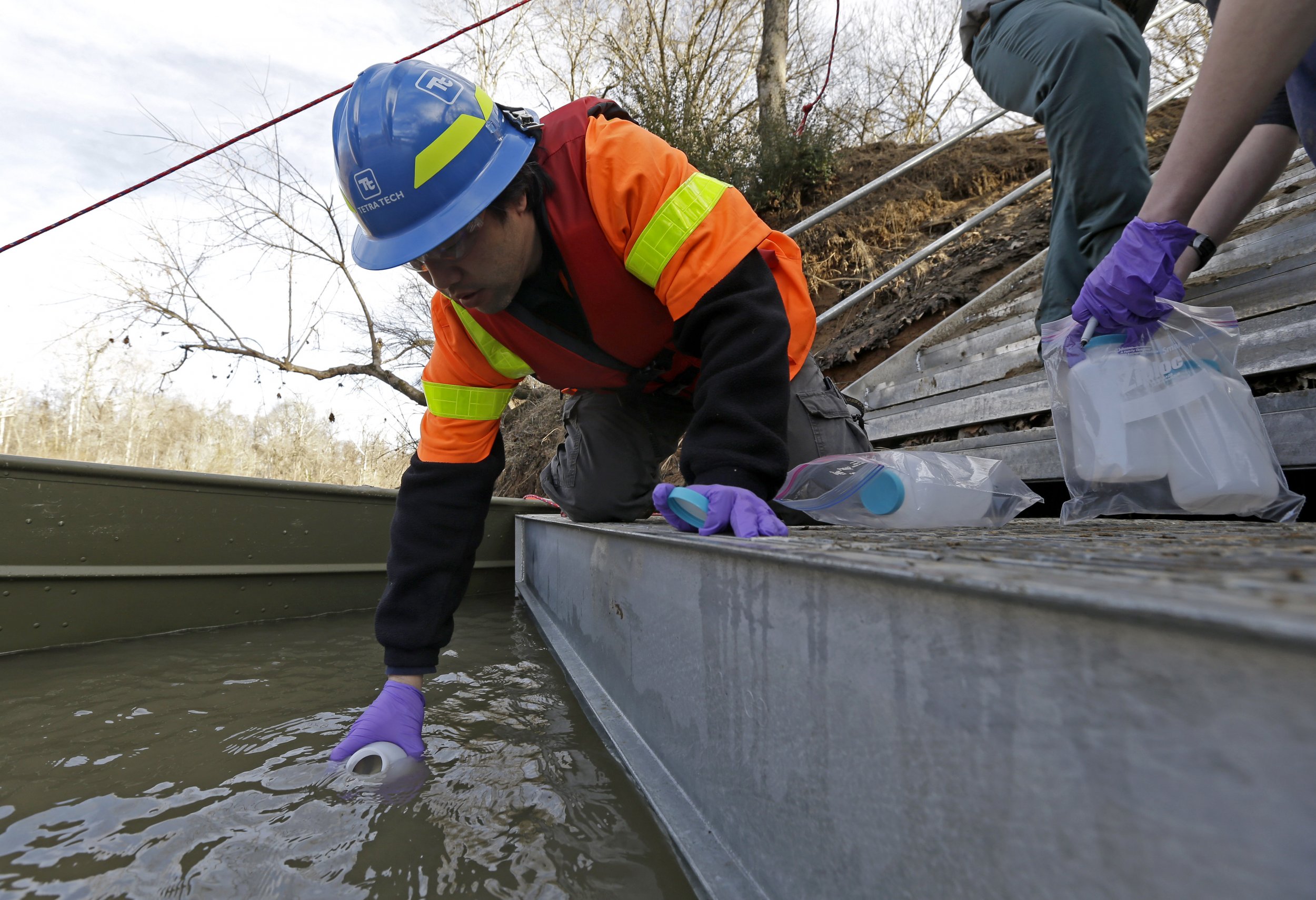
Barely four days after the federal government announced they were moving ahead with the first-ever regulations on the disposal of toxic coal ash, news began to surface of a massive spill in North Carolina.
Coal ash is a heavy metal-laden and possibly radioactive byproduct of coal plants that is stored in ponds. On Sunday, an estimated 50,000 to 82,000 tons of ash and up to 27 million gallons of ash basin water poured into the Dan River from a coal ash pond inexplicably built over an aging storm drain pipe that broke.
The ash pond on the Dan River is run by Duke Energy, the primary supplier of energy in North Carolina. Duke Energy is no stranger to problems with coal ash handling: The company is currently being sued by state environmental officials for groundwater and wastewater violations at the Dan River plant and 11 other sites in North Carolina. The suit, which was filed in August and is still pending, is the first time a state has tried to sue a company for illegal coal ash pond dumping, according to NC Department of Environment and Natural Resources.
While North Carolina awaits conclusive testing of the river, one basic question sticks out: why was a coal ash pond built over a pipe that drains into a water source?
"The storm drain was there already," Lisa Hoffmann, a Duke Energy spokesperson, told Newsweek. "The coal-burning power plant began operations in the late 1940s, and the storm drain was built in the 1960s. At some point the ash basin extended over the drain."
Hoffman told Newsweek that a second Duke Energy facility, the Wabash River Station in Indiana, is also built over a storm drain. The pipe under the Wabash pond was last inspected in 2010, according to Hoffman, and the company is "currently arranging for another inspection" out of "an abundance of caution" in light of the Dan River spill.
The city of Danville, Virginia, which is downstream from Eden, North Carolina where the spill occurred, gets its drinking water from the Dan River. On Thursday, the Danville water company determined that its municipal water is sufficiently treated and safe to drink. No arsenic or other heavy metals, commonly found in coal ash, were detected in the first samples of treated river water at Danville.
But Anna Dulaney, a toxicologist with the North Carolina Poison Center, says people should use common sense. "I would encourage them to take precautions. How does the water smell? How does the water look? If I was pregnant or had small children, I might be concerned enough to filter my water or use bottled water," Dulaney tells Newsweek.
Coal ash generally contains a variety of highly toxic heavy metals like copper, arsenic, chromium and lead, though concentrations vary widely due to to the material's nature as a waste product generated from several stages of coal production and burning. It can also be more radioactive than nuclear waste, according toScientific American. Dulaney, the toxicologist, noted that "chronic exposure at high levels" of any of the metals found in coal ash would be needed for the worst human health effects, like neurotoxicity and kidney and liver damage, to set in. So far, there is no indication that the Dan River spill has produced levels that would raise red flags for human health, Dianne Reid, the chief of environmental sciences at the NC Department of Environment and Natural Resources, told Newsweek.
In 2012, all coal plants in the US generated 110 million tons of coal ash. As the Washington Post points out, slightly less than half is recycled into materials like concrete. Much of the rest ends up in storage facilities like Duke Energy's coal ash pond. Wet-storage coal ash ponds are often built near rivers and lakes to drain water produced during the coal sluicing process, which was why Duke Energy built the pond alongside a drinking water source.
The amount of coal ash at power plants is anticipated to go up in the next few years, due to new EPA regulations that require power plants to remove a longer list of pollutants, like mercury, from their exhaust.
After the coal-related West Virginia chemical spill a few weeks ago, and with the first-ever federal rules on coal ash disposal expected at the end of the year, it remains to be seen how coal companies will respond to major accidents like this one as scrutiny of the industry increases.
A year ago, then-Duke Energy CEO Jim Rogers, discussing leaking coal ash ponds, said the company would be "cleaning up all that." But North Carolina and Virginia's communities along the Dan River are still waiting.
Uncommon Knowledge
Newsweek is committed to challenging conventional wisdom and finding connections in the search for common ground.
Newsweek is committed to challenging conventional wisdom and finding connections in the search for common ground.
About the writer
Zoë is a senior writer at Newsweek. She covers science, the environment, and human health. She has written for a ... Read more
To read how Newsweek uses AI as a newsroom tool, Click here.








